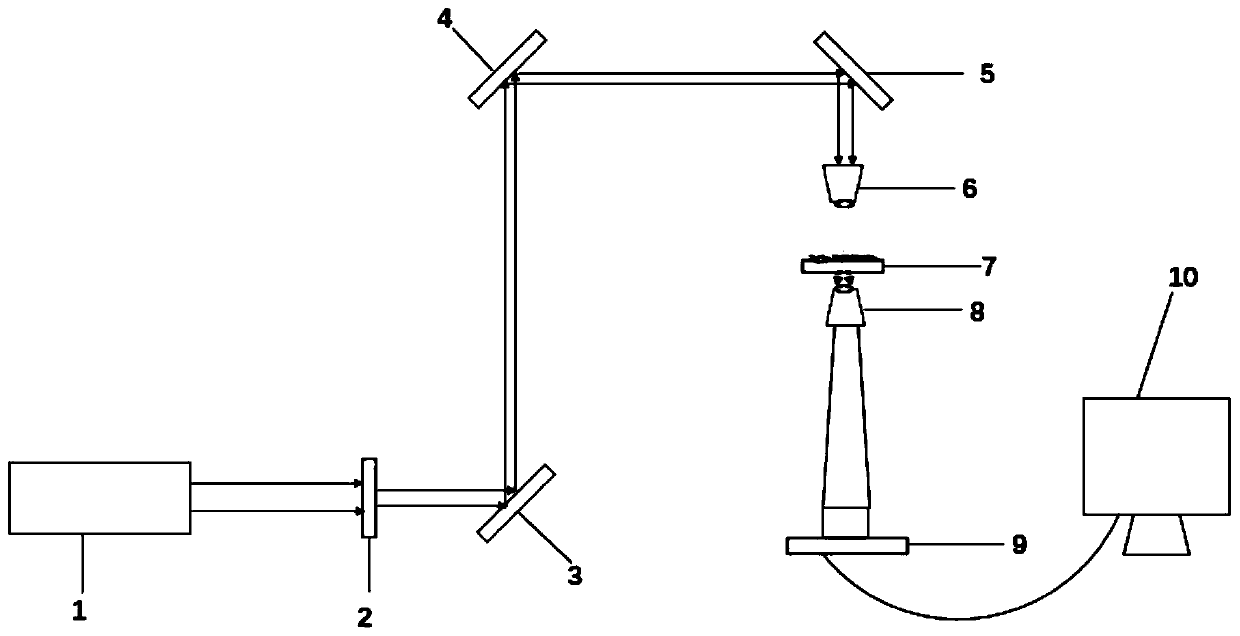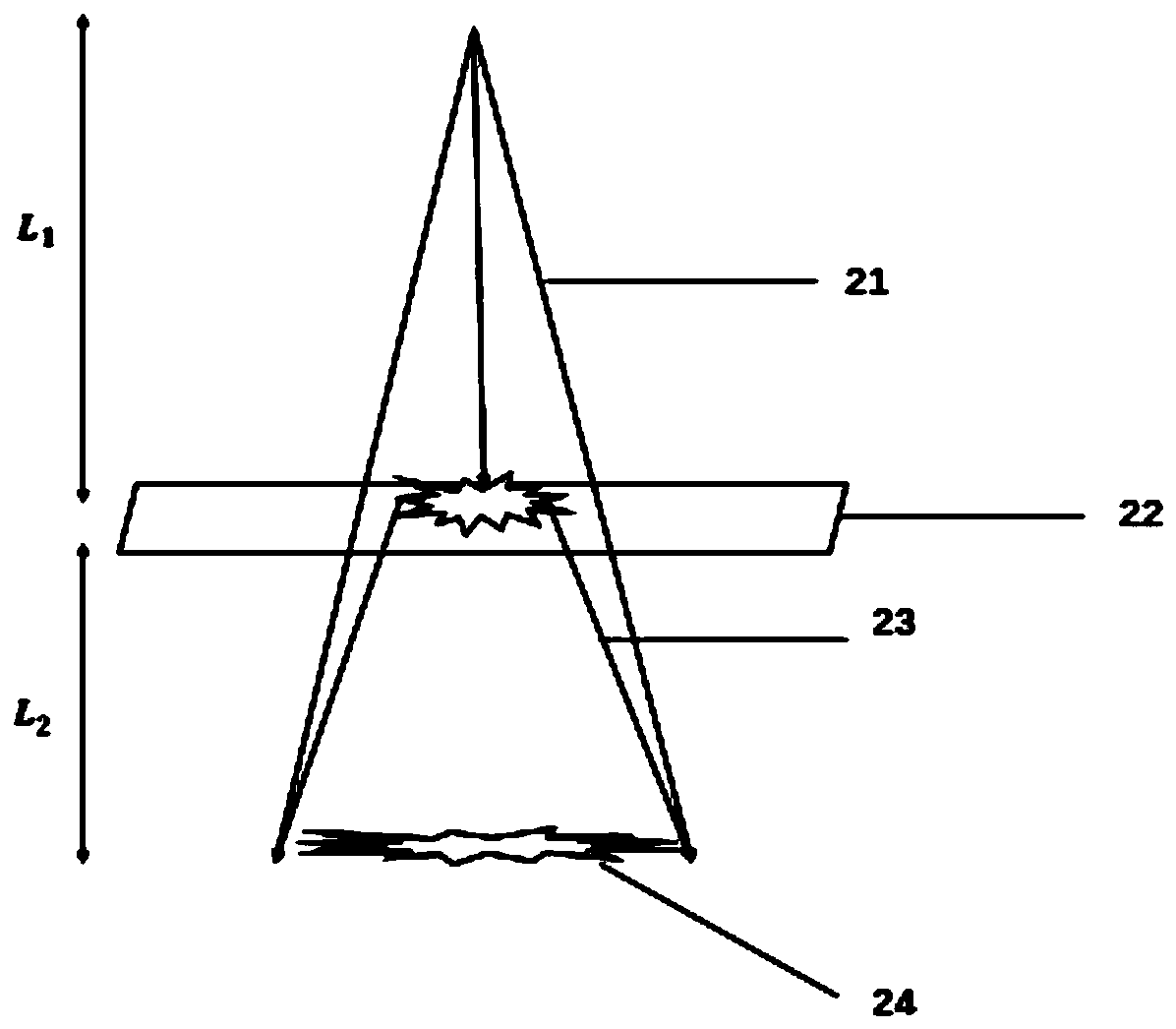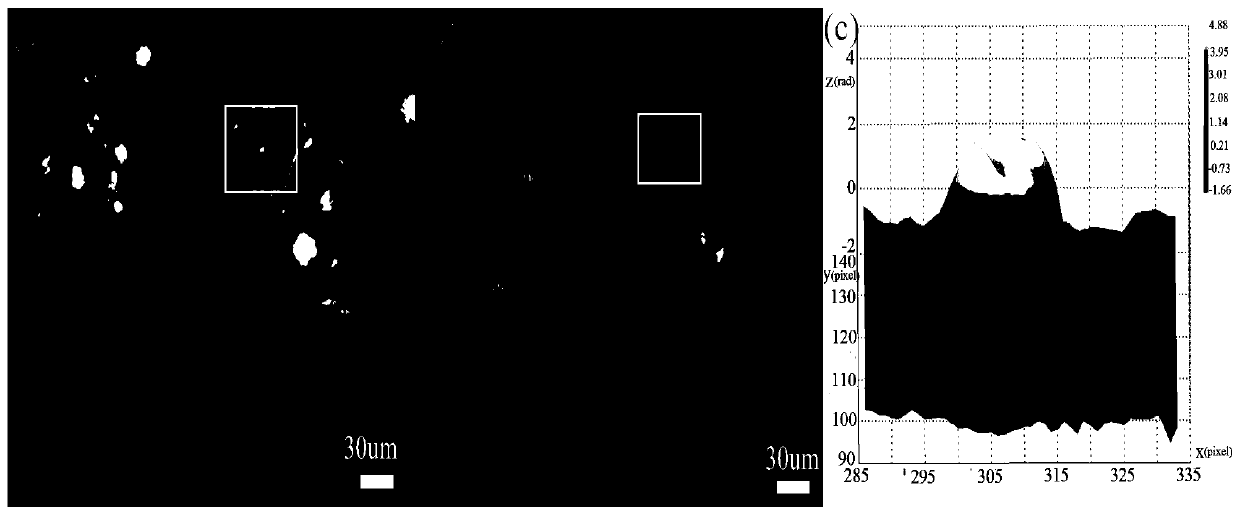High resolution holographic microscope and method for living cell imaging
A live cell and microscope technology, applied in the field of high-resolution holographic microscope, can solve the problems of not making full use of the limited spatial bandwidth of the CCD camera, the system resolution is difficult to be further improved, and the distance between the sample and the recording surface is difficult to get close, etc. Achieve the effects of reducing the density of interference fringes, easy adjustment, and quantitative measurement
- Summary
- Abstract
- Description
- Claims
- Application Information
AI Technical Summary
Problems solved by technology
Method used
Image
Examples
Embodiment 1
[0034] like image 3 for use figure 1 7721 live cell holograms and reconstructed images obtained by high-resolution holographic microscopy are shown. The laser 1 emits a coherent beam, and the power is continuously attenuated by the attenuator 2 to avoid damage to the living cell sample. The light source passes through three mirrors 3, 4, and 5 at an angle of 45° to the horizontal direction to change the direction of light propagation, so that the light The direction changes from horizontal to vertical, and is focused into a secondary point light source through the 10× microscope objective lens 6. When the secondary point light source passes through the three-dimensional micron displacement platform 7 loaded with 7721 living cell samples, the object light and the reference light interfere. A coaxial hologram is formed, and the image is enlarged by a 40× microscope objective lens 8, and finally received by a CCD camera 9 and stored in a computer 10, such as image 3 Shown in ...
Embodiment 2
[0036] like Figure 4 for use figure 1 Hacat live cell holograms and reconstructed images obtained by high-resolution holographic microscopy are shown. The laser 1 emits a coherent beam, and the power is continuously attenuated by the attenuator 2 to avoid damage to the living cell sample. The light source passes through three mirrors 3, 4, and 5 at an angle of 45° to the horizontal direction to change the direction of light propagation, so that the light The direction changes from horizontal to vertical, and is focused into a secondary point light source through the 10× microscope objective lens 6. When the secondary point light source passes through the displacement platform 7 carrying the Hacat living cell sample, the object light and the reference light interfere to form a coaxial light source. Hologram, the image is enlarged by 40 × microscope objective lens 8, finally received by CCD camera 9 and stored in computer 10, such as Figure 4 Shown in (a). Figure 4 (b) is ...
PUM
| Property | Measurement | Unit |
|---|---|---|
| Wavelength | aaaaa | aaaaa |
| Coherence length | aaaaa | aaaaa |
Abstract
Description
Claims
Application Information
 Login to View More
Login to View More - R&D
- Intellectual Property
- Life Sciences
- Materials
- Tech Scout
- Unparalleled Data Quality
- Higher Quality Content
- 60% Fewer Hallucinations
Browse by: Latest US Patents, China's latest patents, Technical Efficacy Thesaurus, Application Domain, Technology Topic, Popular Technical Reports.
© 2025 PatSnap. All rights reserved.Legal|Privacy policy|Modern Slavery Act Transparency Statement|Sitemap|About US| Contact US: help@patsnap.com



